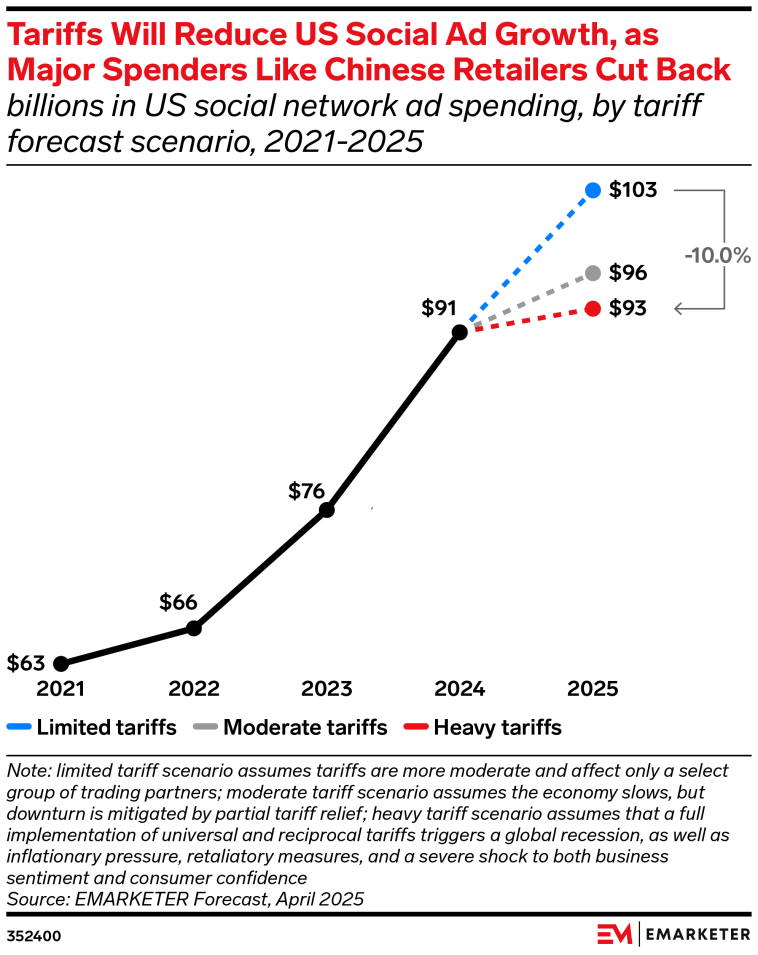Online Security in the Modern Business Landscape: A Closer Look at Verification and Trust
The digital era has transformed how businesses operate—ranging from small enterprises and industrial manufacturing to the fast-evolving automotive and electric vehicle sectors. When you visit a website such as Investopedia, the brief encounter with a message like “Verifying you are human” may seem almost incidental. However, this quick check carries a super important role in today’s online ecosystem. In today’s opinion piece, we’ll get into the layered world of online verification systems, discuss their effect on various industries, and explore how these measures reflect broader economic trends, business tax laws, and marketing challenges.
Throughout this piece, we’ll use plain language and relatable synonyms to make sense of the tangled issues, tricky parts, and twists and turns that businesses often face when trying to ensure secure online transactions. This discussion not only examines the technical angle of online verification but also dives into how these practices intertwine with broader business strategies and economic news.
Evolution of Digital Verification: How and Why It Matters
At its core, online verification is about establishing trust. You may have seen the message, “Verifying you are human” on websites that rely on advanced content delivery networks (CDNs) like Cloudflare. What initially looks nerve-racking or off-putting to some visitors is actually a shield that protects both the website and its users from malicious bot traffic and automated attacks.
Historically, websites started with simple designs that rarely required this extra layer of security. However, as digital attacks have become more frequent and automated threats more sophisticated, business websites and online platforms have had to figure a path through a rapidly changing landscape. Today’s digital verification systems are full of problems—but they are also constantly evolving to address the hidden complexities of cyber threats.
Consider the following aspects that highlight the evolution of online verification:
- Security Assurance: By running a quick background check on every connection, websites make sure that only genuine visitors gain access to content.
- User Experience: Despite an extra step in your browsing journey, these measures help maintain smooth operations during peak traffic times.
- Business Protection: In an economy where digital transactions form a super important part of revenue, protecting intellectual property and customer data is inevitable.
This evolution is especially visible in businesses that serve as hubs for economic and business intelligence. In this context, a quick pop-up message saying “Verifying you are human” is a sign that the digital front line is active and alert, ensuring that every interaction is safe.
Impact on Small Businesses: Trust, Traffic, and Economic Realities
Small businesses often operate with limited resources and less robust IT infrastructures than their larger counterparts. When you run a small business, the online presence becomes crucial—not only do you need to showcase your products and services, but you also have to instill confidence among your customers.
Online verification systems, though occasionally intimidating or even nerve-racking for a new visitor, actually work to protect small vendors by weeding out harmful automated tools and bot-driven assaults. For example, when a small business website enforces human checks, it adds a critical layer of security, which in turn helps protect customer data, maintain smooth website performance, and ultimately build customer trust.
Evaluating the Role of Verification in Local Business Strategies
Small enterprises frequently face challenging bits in the realm of digital marketing and online customer engagement. Verification messages might seem irritating to some users, but they are a practical solution to a common modern problem. When properly implemented, these measures can benefit local businesses in several ways:
- Improved Security: With fewer resources to invest in heavy cybersecurity measures, a simple human verification system goes a long way in preventing unauthorized access.
- Increased Trust: Customers feel more comfortable shopping or browsing when they know that their personal data is protected.
- Cost Efficiency: Instead of investing heavily in complex anti-hacking software, many small businesses rely on third-party solutions like Cloudflare that integrate easy-to-use verification screens.
Although these methods might add one extra step to the user journey, the benefits—ranging from fewer data breaches to a bolstered brand reputation—outweigh the slight inconvenience. After all, managing your way through modern cyber threats is as critical as choosing the right marketing channels or understanding business tax laws.
Industrial Manufacturing Online: Guarding the Digital Gates
The industrial manufacturing sector is no stranger to digital transformation. Modern factories and production lines rely on integrated software systems that require rigorous online verification protocols for everyday operations. Securing sensitive data about production schedules, supplier information, and inside details of industrial processes is full of problems if left unprotected.
Many industrial manufacturers now implement robust online security measures to protect their operational data. The use of digital verification processes minimizes the risk of industrial espionage and cyberattacks that could impact production. Here are some key reasons for its growing importance:
- Supply Chain Security: In manufacturing, the supply chain is on edge and often vulnerable to cyberattacks. Verification systems help safeguard these essential links.
- Data Integrity: Accurate and timely data is the backbone of efficient manufacturing. By preventing bot-based intrusions, companies ensure that production data remains reliable.
- Intellectual Property Protection: Innovative production methods and designs are often riddled with tension when it comes to protecting unique processes and technological know-how.
Many manufacturing plants are increasingly aware that securing digital assets is as important as keeping the physical assembly line running. As production becomes more automated and connected, the need to figure a path through cybersecurity challenges becomes non-negotiable. Verification systems help solve some of those twisted issues by ensuring that every online connection is genuine, reducing the risk of cyber sabotage.
Table: Benefits of Digital Verification in Industrial Manufacturing
| Aspect | Benefit | Practical Example |
|---|---|---|
| Security Assurance | Prevents unauthorized access | Secure remote access to production databases |
| Data Integrity | Ensures reliable production data | Accurate inventory management during peak usage |
| Operational Continuity | Minimizes production disruptions | Stable factory applications even during critical processes |
Such measures enable industrial companies to work through the challenges of modern technology and digital threats. They provide a framework for protecting both the immediate operational framework and the future innovations that drive growth in the manufacturing industry.
Automotive and Electric Vehicles: Steering Through Digital Threats
The automotive sector, including the rapidly expanding realm of electric vehicles, relies heavily on digital technologies. The cars of today are deeply integrated with software systems—from infotainment to advanced driver assistance to even fully autonomous operations. With so much data being collected and processed in real-time, ensuring secure online verification becomes super important not only for consumers but also for automotive manufacturers.
Automotive companies often face a unique set of tricky parts when it comes to cybersecurity. The need to protect connected cars, over-the-air updates, and sensitive customer information makes robust digital checks indispensable. For instance, just as a website might verify that a visitor is human before granting access, an electric vehicle’s maintenance system might incorporate similar measures to confirm that data being received or transmitted is from a trustworthy source.
Key Challenges and Digital Safeguards in the Automotive Arena
There are several interconnected challenges in the automotive world that drive the need for these digital verification measures:
- Connected Car Security: As cars become more like mobile computers, ensuring each online interaction is secure is critical. Automated verification checks help in preventing hacking attempts that could jeopardize the vehicle’s control systems.
- Software-Driven Innovation: With vehicles undergoing continuous software updates, manufacturers need to make sure that every update is genuine, thus using techniques akin to human verification to ensure authenticity.
- Consumer Trust: When buyers invest in electric vehicles or advanced automotive technology, they expect that strong digital defenses protect their personal data and ensure overall reliability.
For example, many auto manufacturers are now integrating advanced cyber detection systems that closely resemble those used by high-security websites like Investopedia. Although it can be a bit nerve-racking for users when first encountering such systems, the extra layer of protection fosters an environment where innovation can thrive without compromising security.
Business Tax Laws and Economic Implications: The Hidden Side of Online Security
No conversation on modern business practices can ignore policies, taxation, and economic indicators. The cost of integrating valid digital verification systems is often weighed against the potential loss from cyberattacks and data breaches. From the perspective of business tax laws, investing in cybersecurity—including verification measures—can sometimes yield deductions or credits that help mitigate these expenses.
Policymakers are increasingly aware that as technology evolves, so do the ways in which companies protect their digital assets. In this context, the extra steps in online verification can be seen as part of a larger strategy to create a more secure and resilient economy. While the extra verification screen might seem like a small friction point during browsing, it is a precursor to larger protective measures that businesses of all sizes rely upon.
Economic Trends and Security Investments
Several economic trends highlight the importance of investing in cybersecurity and online verification:
- Increased Cyber Insurance: As the risk of digital threats grows, more companies are purchasing cyber insurance, reflecting an economic response to the rise in electronic dangers.
- Technology-Driven Tax Benefits: Many governments now offer tax incentives for businesses that invest in sound cybersecurity measures—viewed as essential in the modern economy.
- Boost to Consumer Confidence: Robust online verification systems indirectly stimulate economic activity by ensuring that consumer data remains secure, thereby encouraging more online transactions.
Ultimately, the cost of maintaining defense mechanisms like human verification is a small price to pay in a time when data is nearly as valuable as physical assets. By integrating these measures, companies not only protect themselves but also contribute to a broader ecosystem of secure and resilient market practices, which in turn supports long-term economic growth.
Marketing and Customer Experience: Balancing Security with Usability
In the competitive ecosystem of modern business, marketing is as much about building trust as it is about selling products or services. In today’s online environment, even a simple message prompting you to verify your humanity can send a signal to consumers that a business is serious about protecting its digital interface. This is especially true in industries such as automotive, small business retail, and industrial manufacturing, where customers expect a seamless yet secure experience.
There is always a challenge here: how do businesses work through the additional friction that an extra verification step might cause? The answer lies in enhancing user education and digital transparency. By explaining why such steps are necessary, companies can ensure that the slight inconvenience is understood as a part of a broader commitment to security.
Guidelines for Merging Security with Strong Marketing Appeals
Here are a few strategies companies use to maintain a balance between robust digital security and a smooth user experience:
- User-Friendly Design: Developers are continually optimizing verification processes, making them as intuitive and fast as possible so that users are not left hanging.
- Clear Communication: Businesses that clearly communicate the reasons behind these checks tend to see higher user acceptance. A brief explanation of “protecting your data” can go a long way.
- Integrated Brand Messaging: Security measures can be woven into the brand’s narrative, emphasizing that a commitment to protecting information is as significant as the quality of the product or service offered.
Ultimately, effective marketing today demands that customers know they are not just buying a product or a service, but also a promise of secure, uninterrupted access. Although an extra verification step might initially appear as a hurdle, when it is part of an overall transparent and supportive customer experience, it only deepens the brand’s reliability and trustworthiness.
Looking Ahead: Future Challenges and Emerging Trends in Online Verification
As technology continues to evolve, so will the methods used to verify online interactions. With the rise of artificial intelligence, machine learning, and biometric authentication, companies are set to take a closer look at even more advanced ways of protecting their digital spaces. The secure systems of today are a preview of tomorrow’s mechanisms—ones that blend user convenience with dependable security.
Future trends in online verification are likely to include:
- Biometric Checks: As smartphones and wearable devices integrate biometric sensors, the everyday verification process might soon rely on fingerprint or facial scans rather than text-based challenges.
- Adaptive Security Protocols: Using artificial intelligence to predict and counteract potential threats could allow verification systems to get around threats before they fully materialize.
- Decentralized Authentication: Innovations such as blockchain could introduce a decentralized approach to verifying online interactions, thus reducing dependency on a single platform’s security measures.
These emerging trends are crucial to consider, especially when planning long-term investments in cybersecurity for any business sector. Whether you are running an auto dealership, managing a boutique industrial manufacturer’s website, or operating a small business storefront, expecting that tomorrow’s verification systems might operate on entirely new principles should shape your strategic planning today.
Diving Into the Fine Points of Future Digital Security
Let’s take a closer look at the emerging digital security techniques and their possible impacts on various sectors:
- Artificial Intelligence in Verification: Modern AI systems are increasingly capable of spotting patterns of unusual behavior. This means that future verification might not only ask you to verify that you are human but might also monitor behavioral cues that indicate possible cyber threats.
- Blockchain-Based Systems: Blockchain technologies offer a decentralized ledger to secure and verify transactions. This can be especially useful in sectors like industrial manufacturing, where multiple parties interact across a vast supply chain.
- Enhanced Biometric Methods: Facial recognition, voice prints, and even brainwave scanning could become part of future verification. Such methods, while still being refined, promise to reduce the chances of fraud and unauthorized access.
Each of these advancements, while promising, comes with its own set of complicated pieces and little twists. The challenge for businesses is to steer through these advances while ensuring that the solutions remain user-friendly and cost-effective. As with any significant change, there is a period of adjustment where both the business and its customer must adapt to a new way of securing daily interactions.
Conclusion: Embracing a Secure Digital Future
In conclusion, the simple act of “Verifying you are human” seen on websites like Investopedia is just one small glimpse into the vast, secure architecture supporting modern online interactions. For small businesses, industrial manufacturing companies, automotive brands, and even those operating in the electric vehicle sector, digital verification is an essential piece of a larger, secure system designed to mitigate risks and protect valuable data.
The economic landscape and complex world of business tax laws also play a role in this shift, where investments in cybersecurity can yield both financial and reputational returns. While balancing security with user experience is often a tricky part, businesses that manage to work through these additional steps tend to build stronger long-term relationships with their customers.
As we head into a future defined by rapid technical evolution and emerging cyber threats, companies large and small must get into a proactive stance. This means digging into new verification technologies, embracing advanced security measures, and working through the inherent challenges these digital protections present. Only by acknowledging the need for enhanced security—and integrating it as a core part of their business strategy—can companies truly claim the trust of their customers, partners, and stakeholders.
Digital security isn’t just a technical requirement; it’s a statement about who you are as a business. It communicates that your brand is reliable, that you value customer privacy, and that you are prepared to find your way through today’s complex online landscape. Whether you’re dealing with the subtle details of business tax laws, the nerve-racking concerns of cyber threats, or simply the everyday need to protect a single transaction, robust online verification systems stand as a critical measure in today’s digital economy.
By embracing these changes and preparing for the future, businesses can remain competitive and secure, showing that even the smallest human verification step plays a super important role in the larger narrative of digital trust. As we move forward, we must continue to take a closer look at these systems, understand their benefits, and remain agile in the face of an ever-changing digital threat landscape.
Ultimately, the security of your online presence is a cumulative effort—a blend of technical innovation, forward-thinking economic policies, and a genuine commitment to customer experience. In positioning digital verification as an essential business practice, companies pave the way for a safe, resilient, and prosperous future in the digital marketplace.
Originally Post From https://www.investopedia.com/what-big-retailers-are-saying-about-consumer-trends-and-the-impact-of-tariffs-on-prices-11795442
Read more about this topic at
Human Verification: Works Invisibly — No Captchas, or ID, …
checking you’re a human when you sign up for Proton Mail


